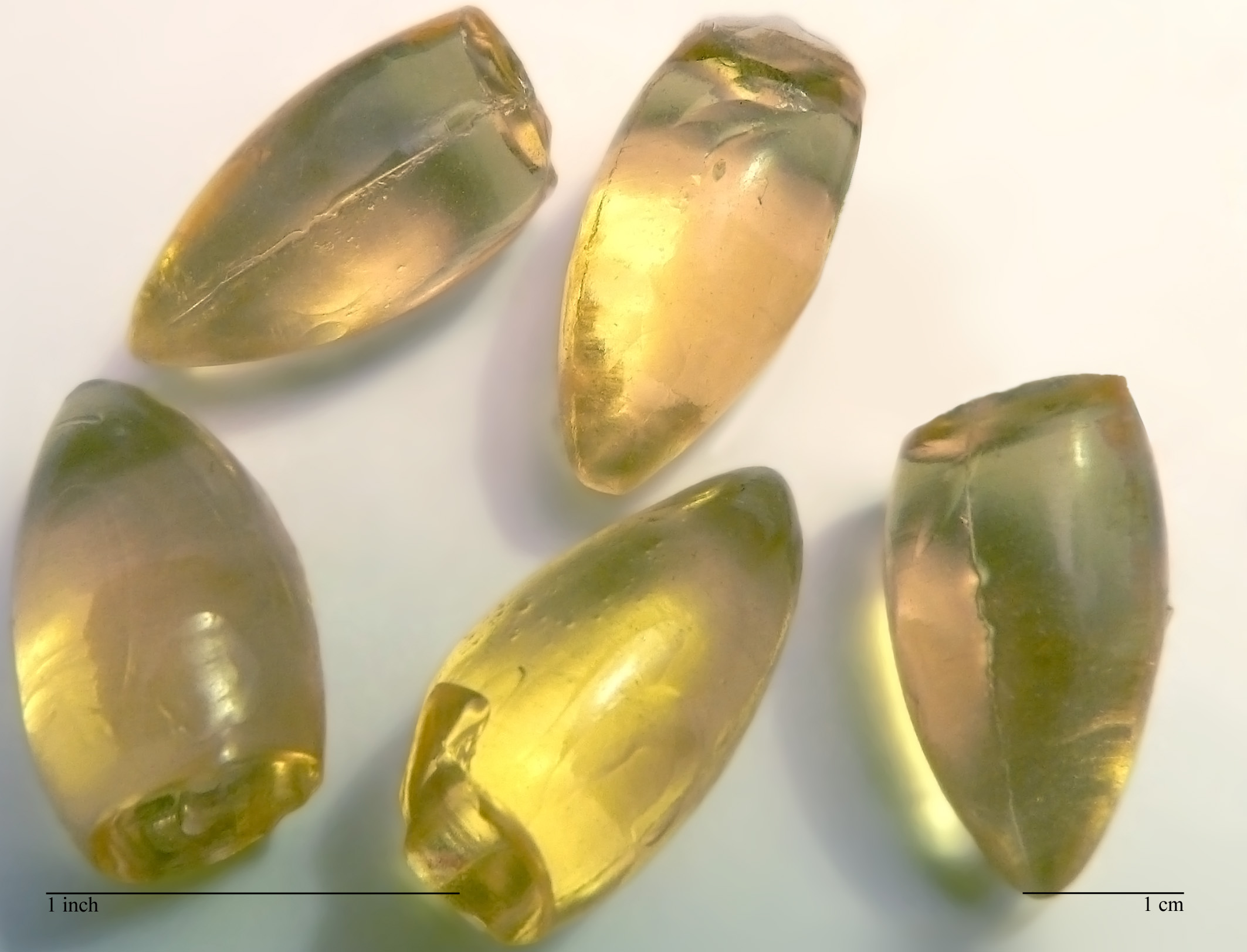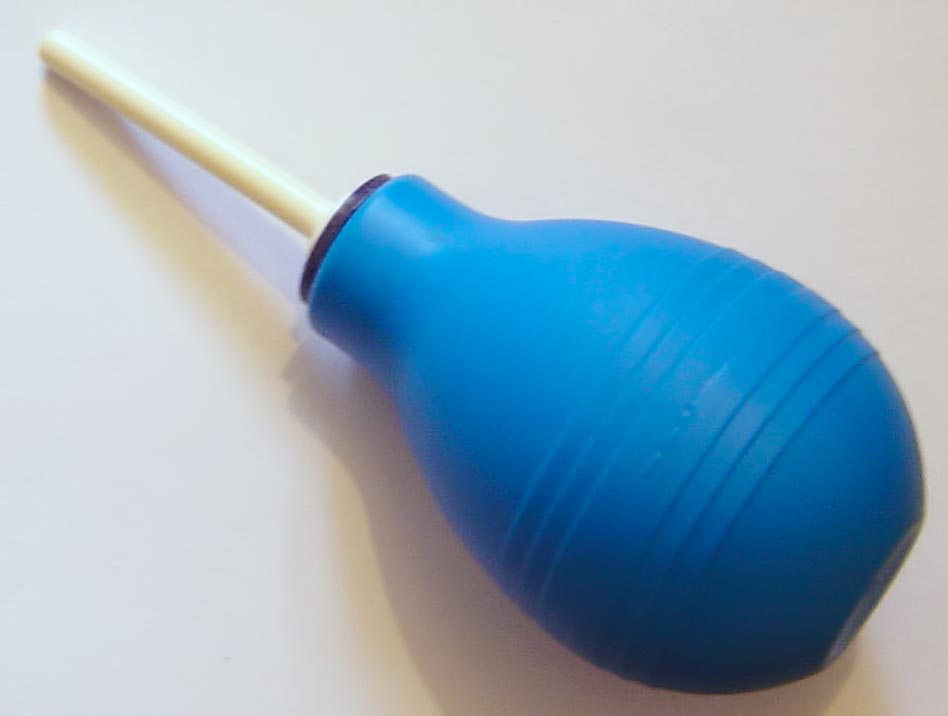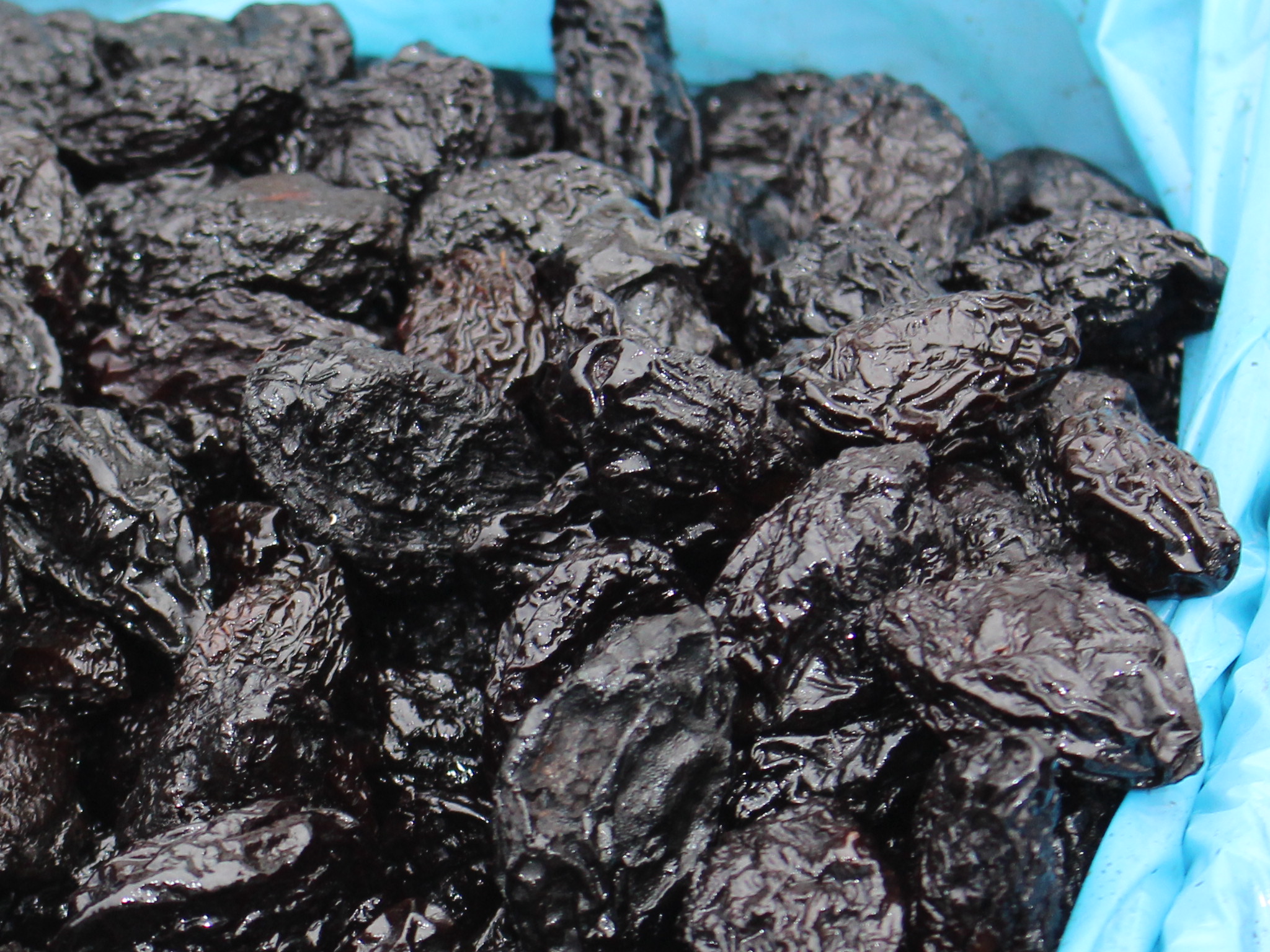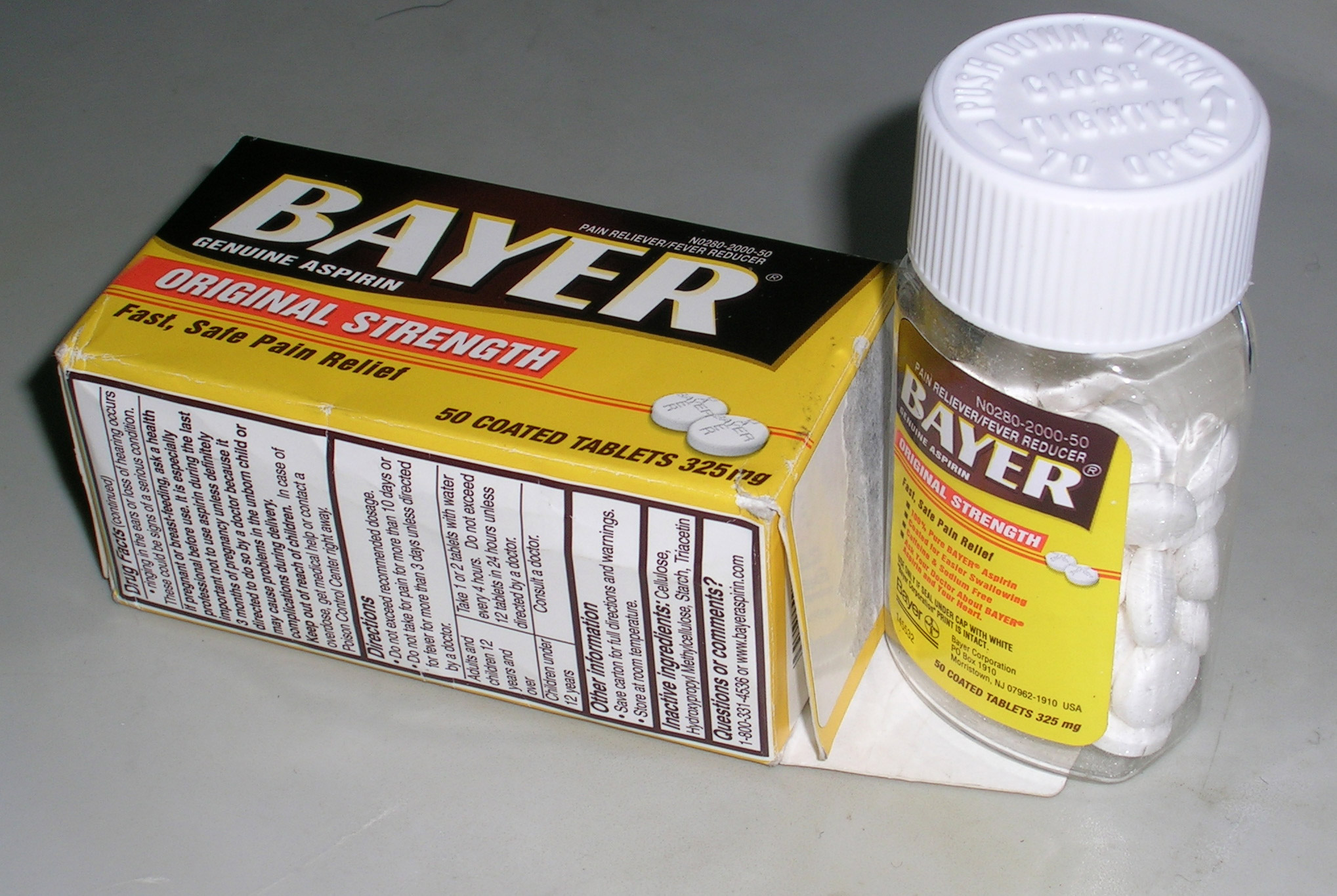|
Laxative
Laxatives, purgatives, or aperients are substances that loosen stools and increase bowel movements. They are used to treat and prevent constipation. Laxatives vary as to how they work and the side effects they may have. Certain stimulant, lubricant, and saline laxatives are used to evacuate the colon for rectal and bowel examinations, and may be supplemented by enemas under certain circumstances. Sufficiently high doses of laxatives may cause diarrhea. Some laxatives combine more than one active ingredient, and may be administered orally or rectally. Types Bulk-forming agents Bulk-forming laxatives, also known as roughage, are substances, such as fiber in food and hydrophilic agents in over-the-counter drugs, that add bulk and water to stools so they can pass more easily through the intestines (lower part of the digestive tract). Properties * Site of action: small and large intestines * Onset of action: 12–72 hours * Examples: dietary fiber, Metamucil, Citrucel, Fi ... [...More Info...] [...Related Items...] OR: [Wikipedia] [Google] [Baidu] |
Constipation
Constipation is a bowel dysfunction that makes bowel movements infrequent or hard to pass. The Human feces, stool is often hard and dry. Other symptoms may include abdominal pain, bloating, and feeling as if one has not completely passed the bowel movement. Complications from constipation may include hemorrhoids, anal fissure or fecal impaction. The normal frequency of bowel movements in adults is between three per day and three per week. Babies often have three to four bowel movements per day while young children typically have two to three per day. Constipation has many causes. Common causes include slow movement of stool within the colon, irritable bowel syndrome, and pelvic floor disorders. Underlying associated diseases include hypothyroidism, diabetes, Parkinson's disease, celiac disease, non-celiac gluten sensitivity, Vitamin B12 deficiency, vitamin B12 deficiency, colon cancer, diverticulitis, and inflammatory bowel disease. Medications associated with constipation in ... [...More Info...] [...Related Items...] OR: [Wikipedia] [Google] [Baidu] |
Psyllium
Psyllium (), or ispaghula (), is the common name used for several members of the plant genus ''Plantago'' whose seeds are used commercially for the production of mucilage. Psyllium is mainly used as a dietary fiber to relieve symptoms of both constipation and mild diarrhea, and occasionally as a food thickener. Allergy to psyllium is common in workers frequently exposed to the substance. It is generally safe and moderately effective as a laxative. Use of psyllium in the diet for three weeks or longer may lower Blood lipids, blood cholesterol levels in people with elevated cholesterol, and may lower blood glucose levels in people with type 2 diabetes. Use of psyllium for a month or longer may produce a small reduction in systolic blood pressure. The plants from which the seeds are extracted tolerate damp and cool climates, and are mainly cultivated in northern India. Uses Preparation Psyllium is produced mainly for its mucilage content. The term ''mucilage'' describes a group ... [...More Info...] [...Related Items...] OR: [Wikipedia] [Google] [Baidu] |
Enema
An enema, also known as a clyster, is the rectal administration of a fluid by injection into the Large intestine, lower bowel via the anus.Cullingworth, ''A Manual of Nursing, Medical and Surgical'':155 The word ''enema'' can also refer to the liquid injected, as well as to a device for administering such an injection. In standard medicine, the most frequent uses of enemas are to relieve constipation and for bowel cleansing before a medical examination or procedure; also, they are employed as a lower gastrointestinal series (also called a barium enema), to treat Travelers' diarrhea, traveler's diarrhea, as a vehicle for the administration of food, water or medicine, as a stimulant to the general system, as a local application and, more rarely, as a means of reducing body temperature, as treatment for encopresis, and as a form of Management of dehydration, rehydration therapy (proctoclysis) in patients for whom intravenous therapy is not applicable. Medical usage The princip ... [...More Info...] [...Related Items...] OR: [Wikipedia] [Google] [Baidu] |
Methylcellulose
Methyl cellulose (or methylcellulose) is a compound derived from cellulose. It is sold under a variety of trade names and is used as a thickener and emulsifier in various food and cosmetic products, and also as a bulk-forming laxative. Like cellulose, it is not digestible, non-toxic, and not an allergen. In addition to culinary uses, it is used in arts and crafts such as papier-mâché and is often the main ingredient of wallpaper paste. In 2022, it was the 388th most commonly prescribed medication in the United States, with more than 9,000 prescriptions. Uses Methyl cellulose has a wide range of uses. Medical Constipation Methyl cellulose is used to treat constipation and is classified as a bulk forming laxative. It works by increasing the amount of stool present which improves intestinal contractions. Effects generally occur within three days. It is taken orally with sufficient water. Side effects may include abdominal pain. It is available over the counter. It is ... [...More Info...] [...Related Items...] OR: [Wikipedia] [Google] [Baidu] |
Glycerin Suppositories
Glycerol () is a simple triol compound. It is a colorless, odorless, sweet-tasting, viscous liquid. The glycerol backbone is found in lipids known as glycerides. It is also widely used as a sweetener in the food industry and as a humectant in pharmaceutical formulations. Because of its three hydroxyl groups, glycerol is miscible with water and is hygroscopic in nature. Modern use of the word glycerine (alternatively spelled glycerin) refers to commercial preparations of less than 100% purity, typically 95% glycerol. Structure Although achiral, glycerol is prochiral with respect to reactions of one of the two primary alcohols. Thus, in substituted derivatives, the stereospecific numbering labels the molecule with a ''sn''- prefix before the stem name of the molecule. Production Natural sources Glycerol is generally obtained from plant and animal sources where it occurs in triglycerides, esters of glycerol with long-chain carboxylic acids. The hydrolysis, saponification, or ... [...More Info...] [...Related Items...] OR: [Wikipedia] [Google] [Baidu] |
Diarrhea
Diarrhea (American English), also spelled diarrhoea or diarrhœa (British English), is the condition of having at least three loose, liquid, or watery bowel movements in a day. It often lasts for a few days and can result in dehydration due to fluid loss. Signs of dehydration often begin with loss of the normal stretchiness of the skin and irritable behaviour. This can progress to decreased urination, loss of skin color, a fast heart rate, and a decrease in responsiveness as it becomes more severe. Loose but non-watery stools in babies who are exclusively breastfed, however, are normal. What is diarrhea? How is it caused, treated and prevented? (see also script)The most common cause is an infection of the intestines due to a virus, bacterium, or parasite—a condition also known as gastroenteritis. These infections are often acquired from food or water that has been contaminated by feces, or directly from another person who is infected. The three types of diarrhea ... [...More Info...] [...Related Items...] OR: [Wikipedia] [Google] [Baidu] |
Defecation
Defecation (or defaecation) follows digestion and is the necessary biological process by which organisms eliminate a solid, semisolid, or liquid metabolic waste, waste material known as feces (or faeces) from the digestive tract via the anus or cloaca. The act has a variety of names, ranging from the technical (e.g. bowel movement), to the common (like pooping or crapping), to the obscene (''Shit, shitting''), to the euphemistic ("doing number two", "dropping a deuce" or "taking a dump"), to the juvenile ("going poo-poo" or "making doo-doo"). The topic, usually avoided in polite company, forms the basis of scatological humor. human feces, Humans expel feces with a frequency varying from a few times daily to a few times weekly. Waves of muscle, muscular contraction (known as ''peristalsis'') in the walls of the colon (anatomy), colon move fecal matter through the digestive tract towards the rectum. Flatus may also be expulsed. Undigested food may also be expelled within the fec ... [...More Info...] [...Related Items...] OR: [Wikipedia] [Google] [Baidu] |
Prune
A prune is a dried plum, most commonly from the European plum (''Prunus domestica'') tree. Not all plum species or varieties can be dried into prunes. Use of the term ''prune'' for fresh plums is obsolete except when applied to varieties of plum grown for drying. In this usage, a prune is the firm-fleshed plum fruit of ''P. domestica'' varieties that have a high soluble solids content, and do not ferment during drying. Most prunes are ''freestone'' cultivars (i.e., the pit is easy to remove), whereas most plums grown for fresh consumption are ''clingstone'' (the pit is more difficult to remove). The sorbitol content of dietary fiber likely provides the laxative effect associated with consuming prunes. Prunes are 64% carbohydrates, including dietary fiber, 2% protein, a rich source of vitamin K, and a moderate source of B vitamins and dietary minerals. Production More than 1,000 plum cultivars are grown for drying. The main cultivar grown in the United States is the 'Improv ... [...More Info...] [...Related Items...] OR: [Wikipedia] [Google] [Baidu] |
Polycarbophil
Polycarbophil calcium ( INN) is a drug used as a stool stabilizer. Chemically, it is a synthetic polymer of polyacrylic acid cross-linked with divinyl glycol, with calcium as a counter-ion. Clinical uses It is used as stool stabilizer to treat constipation, diarrhea and abdominal discomfort. Bulk laxatives absorb liquid in the intestines and swell to form a soft bulky stool. The bulky mass stimulates the intestinal muscles, speeding stool transit time through the colon. Results usually occur within 12 to 72 hours. Calcium polycarbophil will not work without increased fluid intake. Calcium polycarbophil has been marketed as an over-the-counter agent used for treating functional bowel disorder and as a bulk-producing agent. A study looked at the effects of calcium polycarbophil on general irritable bowel syndrome (IBS) symptoms. Fourteen patients with IBS-diarrhea and twelve with IBS-constipation were given calcium polycarbophil for eight weeks and their colon transit times were ... [...More Info...] [...Related Items...] OR: [Wikipedia] [Google] [Baidu] |
Rectum
The rectum (: rectums or recta) is the final straight portion of the large intestine in humans and some other mammals, and the gut in others. Before expulsion through the anus or cloaca, the rectum stores the feces temporarily. The adult human rectum is about long, and begins at the rectosigmoid junction (the end of the sigmoid colon) at the level of the third sacral vertebra or the sacral promontory depending upon what definition is used. Its diameter is similar to that of the sigmoid colon at its commencement, but it is dilated near its termination, forming the rectal ampulla. It terminates at the level of the anorectal ring (the level of the puborectalis sling) or the dentate line, again depending upon which definition is used. In humans, the rectum is followed by the anal canal, which is about long, before the gastrointestinal tract terminates at the anal verge. The word rectum comes from the Latin '' rēctum intestīnum'', meaning ''straight intestine''. Struc ... [...More Info...] [...Related Items...] OR: [Wikipedia] [Google] [Baidu] |
Over-the-counter Drugs
Over-the-counter (OTC) drugs are medicines sold directly to a consumer without a requirement for a prescription from a healthcare professional, as opposed to prescription drugs, which may be supplied only to consumers possessing a valid prescription. In many countries, OTC drugs are selected by a regulatory agency to ensure that they contain ingredients that are safe and effective when used without a physician's care. OTC drugs are usually regulated according to their active pharmaceutical ingredient (API) and strengths of final products. The term ''over-the-counter'' (''OTC'') refers to a medication that can be purchased without a medical prescription. In contrast, prescription drugs require a prescription from a doctor or other health care professional and should only be used by the prescribed individual. Some drugs may be legally classified as over-the-counter (i.e. no prescription is required), but may only be dispensed by a pharmacist after an assessment of the patient's ... [...More Info...] [...Related Items...] OR: [Wikipedia] [Google] [Baidu] |
Rectum
The rectum (: rectums or recta) is the final straight portion of the large intestine in humans and some other mammals, and the gut in others. Before expulsion through the anus or cloaca, the rectum stores the feces temporarily. The adult human rectum is about long, and begins at the rectosigmoid junction (the end of the sigmoid colon) at the level of the third sacral vertebra or the sacral promontory depending upon what definition is used. Its diameter is similar to that of the sigmoid colon at its commencement, but it is dilated near its termination, forming the rectal ampulla. It terminates at the level of the anorectal ring (the level of the puborectalis sling) or the dentate line, again depending upon which definition is used. In humans, the rectum is followed by the anal canal, which is about long, before the gastrointestinal tract terminates at the anal verge. The word rectum comes from the Latin '' rēctum intestīnum'', meaning ''straight intestine''. Struc ... [...More Info...] [...Related Items...] OR: [Wikipedia] [Google] [Baidu] |








